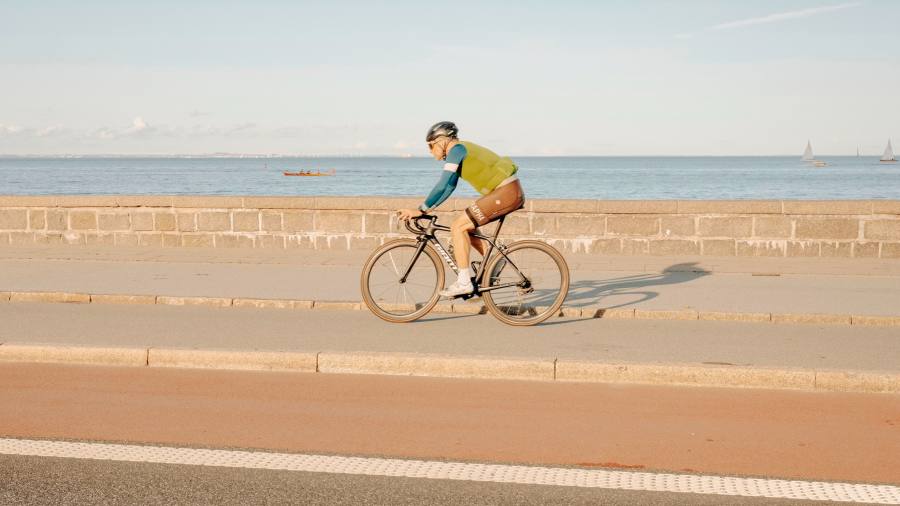
Receive free Things to do in Copenhagen updates
We’ll send you a myFT Daily Digest email rounding up the latest Things to do in Copenhagen news every morning.
This article is part of FT Globetrotter’s guide to Copenhagen
Copenhagen is paradise for cyclists. Biking is not only the easiest way to get around town, it is also pleasant and safe, thanks to widespread segregated cycle lanes. Hiring a bike is straightforward, whether from a shop, an app like Donkey Republic or your hotel. Don a helmet, follow the simple rules (keep to the right; hold your hand up if stopping; don’t take a direct left turn, but instead cross the road and stop at the front of the queue for those coming from the right and wait for a green light there), and enjoy the ride.
Should you want something more ambitious, though, here is an excellent 50km route taking in some of Denmark’s prime cultural locations, and ending at the country’s most visited art museum: the Louisiana.
Copenhagen to the Louisiana Museum of Modern Art (50km)
-
FYI: It’s worth checking the wind direction using windfinder.com. If it’s coming from the south, the ride will be easier. If it’s from the north, you can reverse the route and start at Louisiana and finish in Copenhagen. A strong wind from the east, which is rare, is to be avoided — think about postponing or using an e-bike
The tour starts in the centre of Copenhagen and its main square, Kongens Nytorv. Take the road down to the tourist hotspot of Nyhavn — the 17th-century harbour lined with colourful townhouses — then head up the west bank, past Maersk’s headquarters and Kastellet, the well-preserved citadel. The route heads inland here, over the railway lines and up towards the hip new Nordhavn district. It’s possible to stock up on provisions at one of Copenhagen’s best bakeries, Juno, close by.
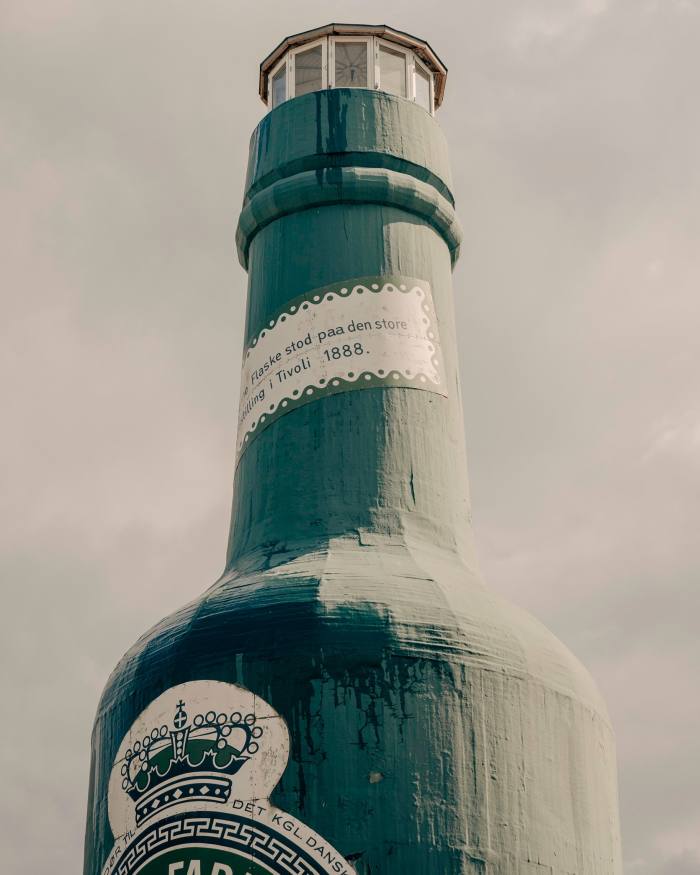
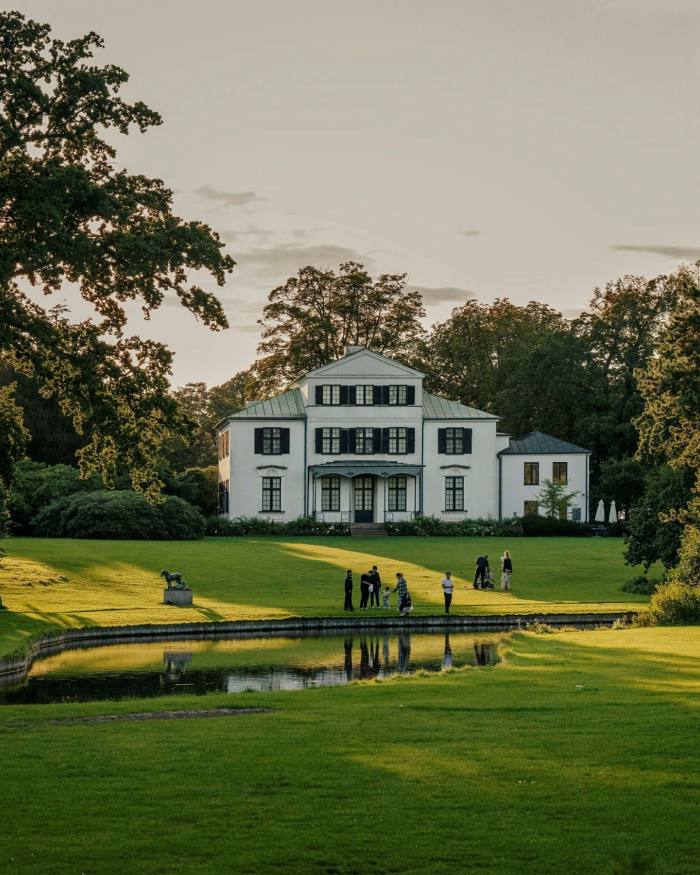
Follow the main road for another 1.5km, until you reach the suburb of Hellerup and take a right on to Strandvejen (“beach road”) — the street that you more or less follow for the rest of the trip. Hellerup has plenty of small shops and cafés, as well as a giant Tuborg bottle as one of its main sights, before you reach a delightful little park on your left that houses the Øregaard Museum, our first cultural stop.
Whether you choose to go inside and see the art (all from 1750 to 1950, with some connection to this area just north of Copenhagen) or simply take a water break will depend on how long you have for the ride. If time is pressing, push on — greater artistic treasures await.
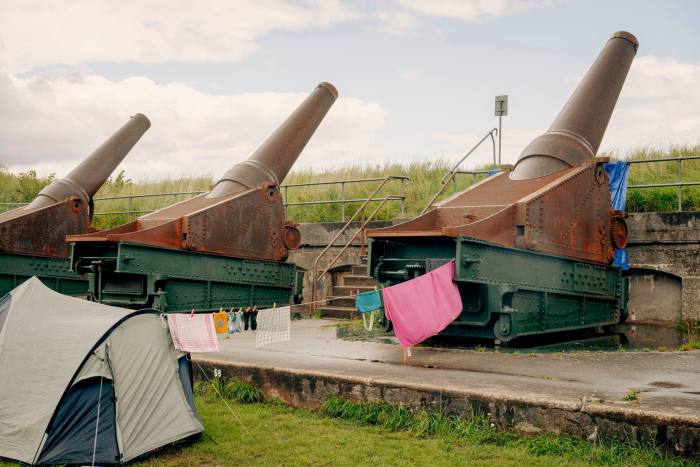
Another 2km along the road is Charlottenlund Fort, a 19th-century coastal battery that now houses a restaurant and has a campsite next door. A little further up the coast is Charlottenlund Søbad, a private association that offers winter bathing to its members (don’t be surprised to see naked Danes getting in or out of the frigid sea) and is open to all from June to August.
Cycle a further couple of kilometres to the small town of Skovshoved and look out for the Uno-X petrol station. Its mushroom-like canopy certainly looks more chic and space age than your average filling station, and that is because it was designed by architect Arne Jacobsen in the 1930s and is now viewed as one of the icons of modernist functionalism.
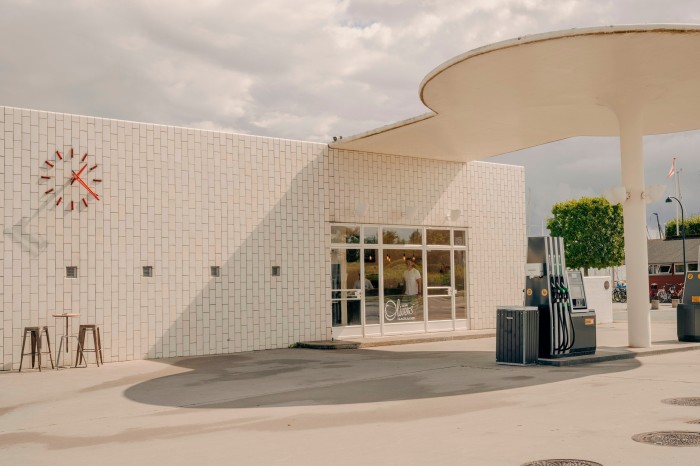
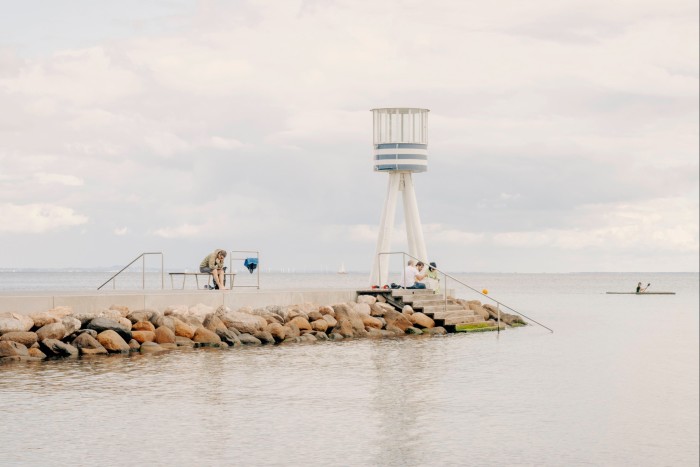
As the road continues north towards Klampenborg, the coastal villas get fancier and fancier, and I start daydreaming about which one I’d most like to live in. Just before the route turns away from the sea, there’s another Jacobsen design worth looking at — his small watchtowers guarding over Bellevue beach in Klampenborg, which is also a potential swimming spot.
From here, take the road inland several kilometres to Ordrupgaard art museum: our second cultural highlight, which, for some, rivals even the ultimate destination. Housing collections of famed French and Danish artists, the original early-20th-century country home now flaunts starchitect extensions by Zaha Hadid and Snøhetta, as well as outdoor sculptures around the grounds. Next door is furniture designer Finn Juhl’s house.
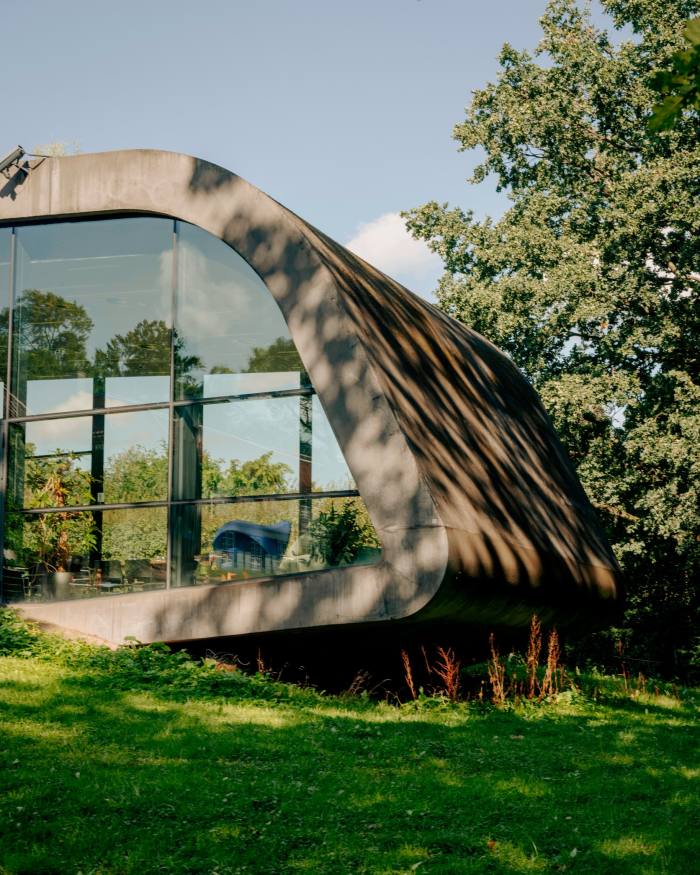
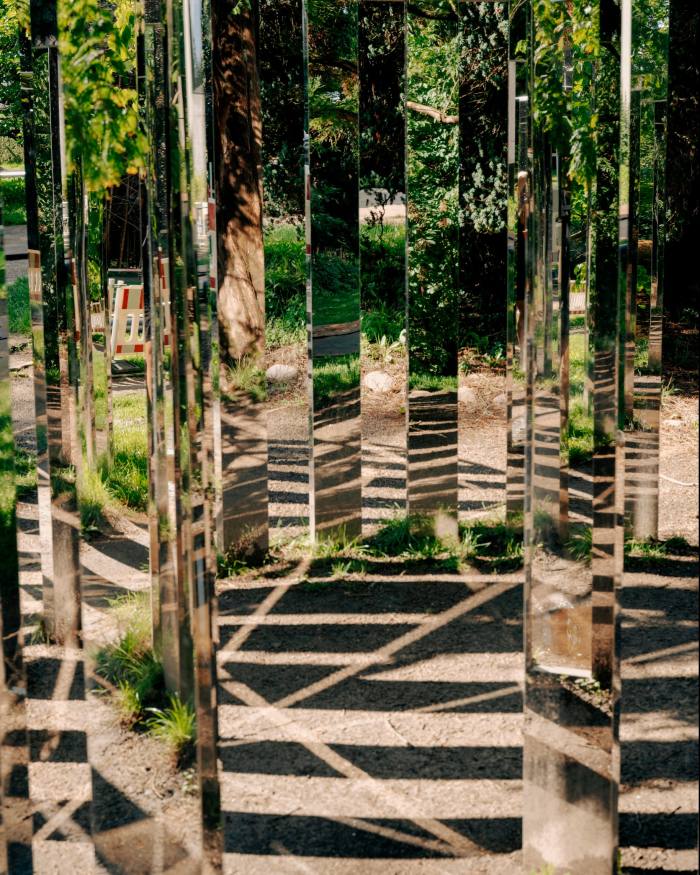
After Ordrupgaard, you soon head into Dyrehaven — the deer park once used as a hunting ground by Danish royalty and now a Unesco world heritage site — for the next 10km or so of riding on dirt tracks. The route gets hillier here but avoids the steepest inclines. Enter the park at the Røde Port, the red gate that lives up to its name. Head east until you reach the thatched house and restaurant of Peter Liep’s Hus, where you turn north. The path slowly climbs upwards — passing, on my trip, dozens of deer on either side — to the Hermitage hunting lodge used by Danish kings in the 18th and 19th centuries. The handsome Baroque building marks the high point of both the climb and the entire route.
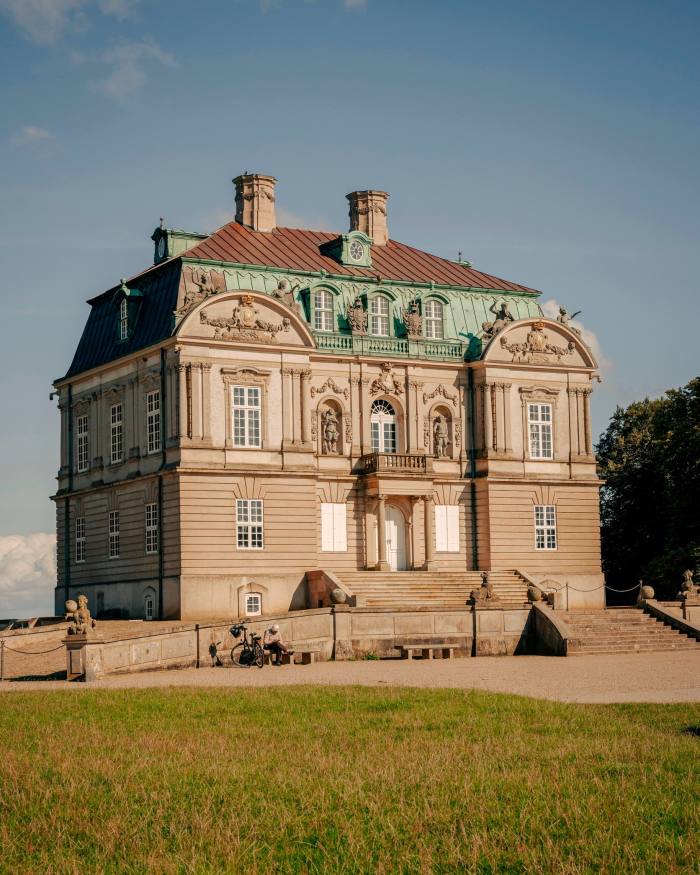
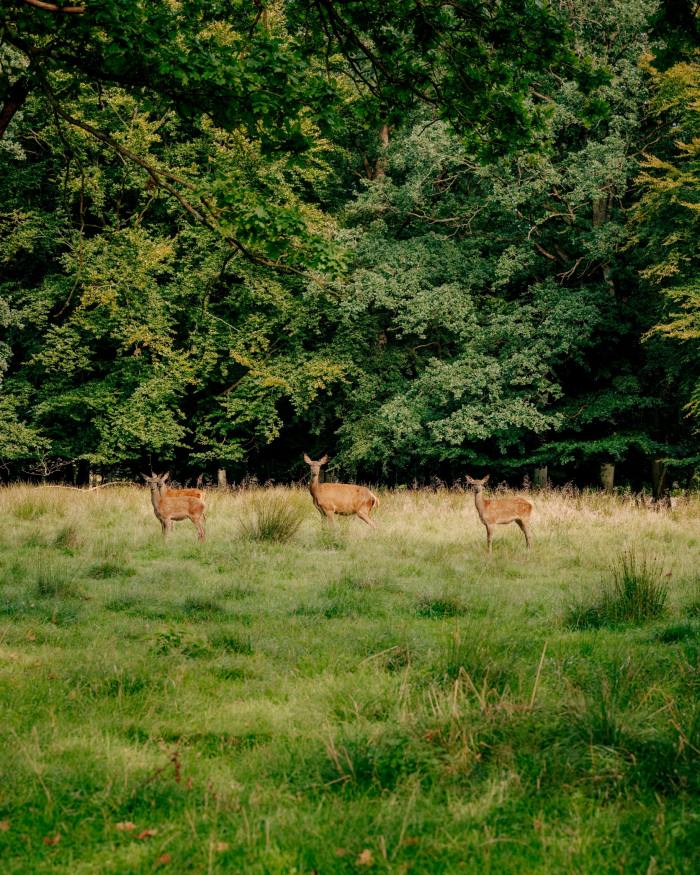
As you head downhill, bear first right then left, skirting a golf course and then back into the woods. You soon reach the hamlet of Raadvad, where I highly recommend Raadvad Kro restaurant as a potential lunch spot (two other possibilities nearby are its sibling establishment Den Gule Cottage, and the unrelated Den Røde Cottage). After the Kro, re-enter the Dyrehaven through a gate and head back towards the coast, stopping just after the railway line and before the sea to rejoin the main Cycle Route 9 from Copenhagen to Helsingør (Elsinore).
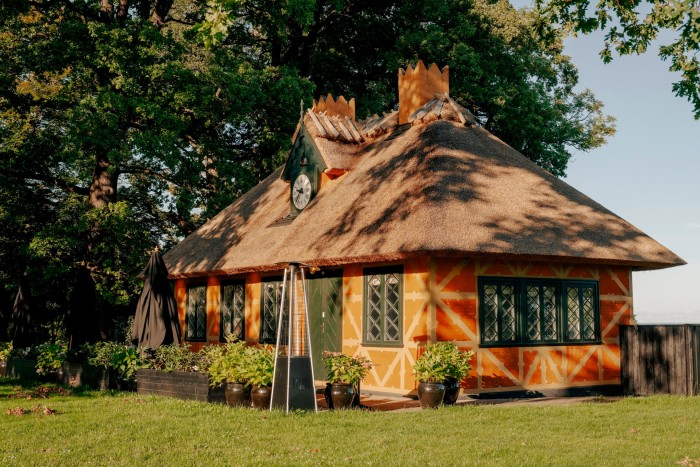
Follow this surprisingly undulating path for about 5km. Just after passing Vedbæk station, a sharp right turn under the railway line connects to the main road, the Rungsted Strandvej, which you essentially follow for the rest of the journey. Our penultimate cultural stop follows in a couple of kilometres: the Karen Blixen Museum, the childhood home of the author best known for writing Out of Africa. Both the house’s interiors and flower garden are well worth a visit if you have time or want a pit-stop before the final push north.
The cycling is flat and unrelenting here, especially if there is a wind from the sea. Seven kilometres from the museum, and just after passing Nivå harbour and beach, look out for the right turn on to Gammel Strandvej, just before the road climbs and enters a forest. This is a more pleasant ride into the town of Humlebaek. Before reaching our final destination in the north, we pass the excellent restaurant Sletten, which is well worth booking for a dinner to celebrate the end of the ride.
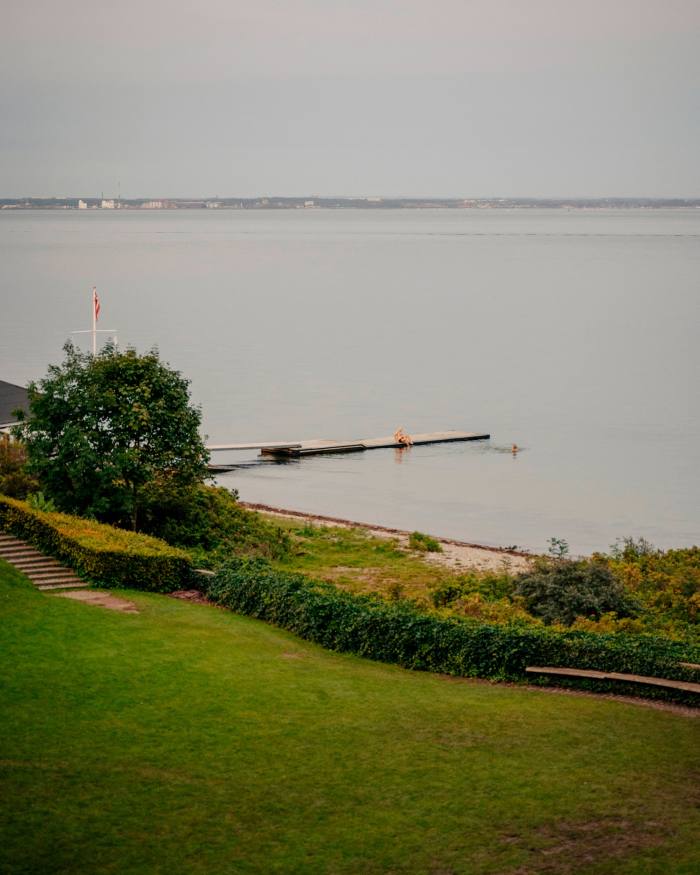
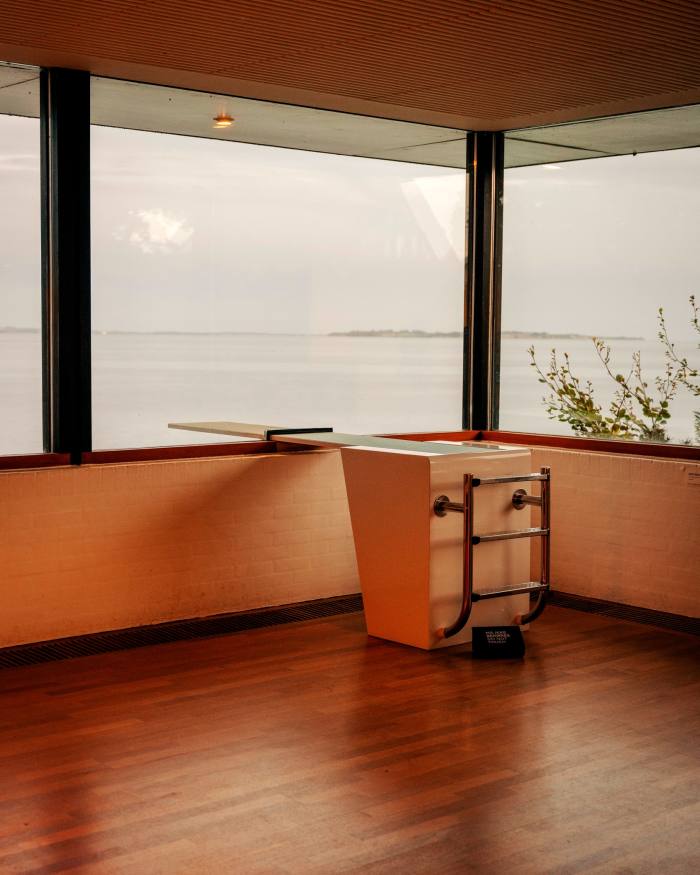
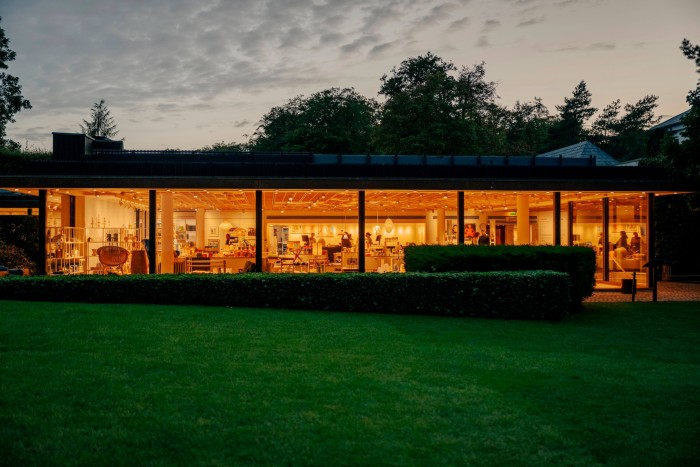
The Louisiana Museum of Modern Art, perched on a cliff overlooking the sea, must be one of the most beautifully located galleries in the world. It may be a slight shock to the system to suddenly run into hundreds of foreign and local tourists after the tranquillity of the cycle ride, but it’s worth allotting several hours to explore the collections, frequently changing special exhibitions and the beautiful grounds. The café serves decent food too.
Those seeking the ultimate workout can cycle back to Copenhagen; the rest of us mortals can happily take the train from Humlebaek (just remember to buy an extra ticket for your bike).
Route variations
A railway line from Copenhagen to Elsinore follows the route and allows for endless variations. It is possible to carry on from Louisiana to Elsinore and its wonderful Kronborg Castle, the setting for Hamlet.
It is also possible to start and end at any of the dozen stations on the route between Copenhagen and Humlebaek. One natural break, about halfway through, is Klampenborg, close to the Ordrupgaard museum; it’s served by the commuter S-tog line, which (unlike the main train line to Elsinore) has the advantage of being free for bikes.
Tell us about your favourite bike rides in and around Copenhagen in the comments below. And follow FT Globetrotter on Instagram at @FTGlobetrotter
Cities with the FT
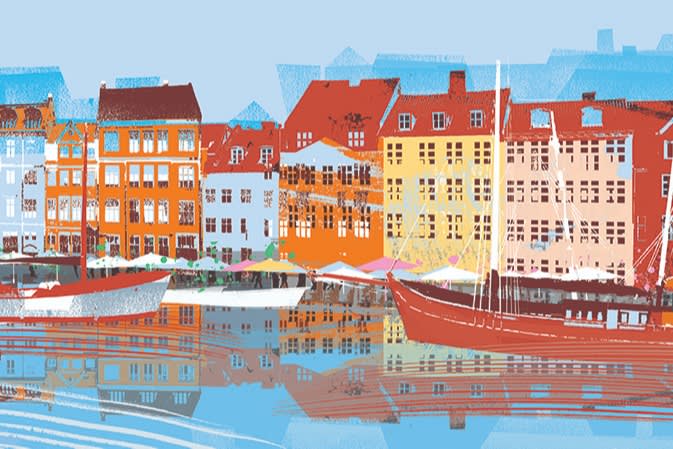
FT Globetrotter, our insider guides to some of the world’s greatest cities, offers expert advice on eating and drinking, exercise, art and culture — and much more
Find us in Copenhagen, London, Hong Kong, Tokyo, New York, Paris, Rome, Frankfurt, Singapore, Miami, Toronto, Madrid, Melbourne and Zürich